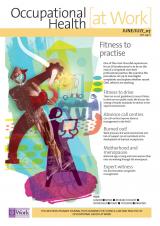June/July 2007 (vol. 04/1)
ContentsFeaturesResearch PlusCPD
Research Plus
WRULD surveillance
Analysis of a monitoring programme for work-related upper-limb disorders (WRULD) at a shoe factory in France confirms the importance of prior history as a predictor of future injury. Importantly, it demonstrates the feasibility of surveillance programmes in identifying workers at elevated risk of developing WRULDs. The study followed 166 blue-collar workers (61% female) across six production units for five years – the predictive roles of various general, psychosocial and occupational factors were assessed. Work pace and prior history were the only predictors of work-related ULD cases in the first 12 months; however, only prior history remained significant in a multivariate analysis. Incidence data for the period 1997–2000 revealed significant effects of psychological distress and prior history; both remaining significant in multivariate analysis.
Annals of Occupational Hygiene 2007 51(3): 337–344.
Occupational Health at Work June/July 2007 (vol. 04/1) pp39



